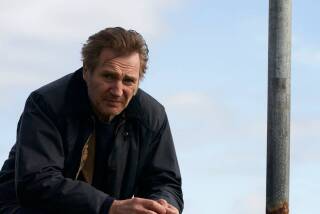Northern Ireland priest’s role in bombing covered up, probe finds
- Share via
Reporting from London — The British government and the Roman Catholic Church conspired to cover up the suspected involvement of a local priest in a deadly triple bombing in Northern Ireland in 1972 that killed nine people, a new investigation into the attack found Tuesday.
Despite strong evidence that Father James Chesney had a hand in the explosions that ripped through the village of Claudy in July 1972, police decided not to go after the priest but instead asked officials in London to work with church leaders in having him removed from the area. Chesney moved across the border and was later assigned to a parish in Ireland.
No one was ever charged in connection with the attack near Londonderry, one of the most notorious incidents of terrorist violence during Northern Ireland’s “Troubles” because of its high civilian toll. Among the dead were an 8-year-old girl and a 16-year-old boy.
The three car bombings were put down as the handiwork of the Irish Republican Army, although no formal declaration of responsibility was ever made.
Chesney, a priest in the nearby village of Bellaghy, was long suspected of being an IRA member and of helping to orchestrate the attack. He died 30 years ago. In 2002, Northern Ireland’s police ombudsman agreed to reopen an investigation, whose results were released Tuesday.
The report concluded that, rather than fulfill their obligation to bring criminals to justice, senior officers of the Royal Ulster Constabulary, or RUC, sought the help of the British government to “render harmless a dangerous priest.”
A British government minister met with the head of the Catholic Church in Ireland to discuss the matter in late 1972. Shortly thereafter, Chesney was moved to Donegal in Ireland, about 40 miles from Londonderry (also known as Derry), though a high-ranking member of the RUC preferred that the cleric be reassigned to a parish much farther away. Afterward, Chesney continued to travel in and out of Northern Ireland, a British province.
The decision to remove him quietly rather than pursue him legally may have sprung from the British ruling establishment’s fears that the arrest of a clergyman could spark an all-out civil war between the province’s Catholics and Protestants. The year 1972 was one of the bloodiest of the Troubles, with more than 500 people killed on both sides of the sectarian divide.
The new report says that neither the British government nor the Catholic Church acted with criminal intent. But justice was nonetheless thwarted.
Cardinal Sean Brady, the current head of the church in Ireland, said he accepted the ombudsman’s findings.
“It is … shocking that a priest should be suspected of involvement in such violence,” Brady said in a joint statement with Seamus Hegarty, the bishop of Derry. “If there was sufficient evidence to link him to criminal activity, he should have been arrested and questioned at the earliest opportunity, like anyone else.”
Owen Paterson, the Cabinet member in charge of Northern Irish affairs for the British government, said he was “profoundly sorry” for the lapse in duty by authorities and acknowledged that “the victims and their families have been denied justice.”
Many of the principal actors in the case have died. It is unlikely that any of those responsible for the bombing or the decision to move Chesney will be found or punished.
Tuesday’s report was the second in less than three months to reassess searing events in Northern Ireland in 1972.
In June, an official investigation into Londonderry’s infamous “Bloody Sunday” massacre in January of that year, in which the British military shot to death 14 civil rights protesters, found that the killings were unjustified and that soldiers lied about their actions afterward.
henry.chu@latimes.com
More to Read
Sign up for Essential California
The most important California stories and recommendations in your inbox every morning.
You may occasionally receive promotional content from the Los Angeles Times.











